Find the current measured by the ammeter in the circuit shown in figure.
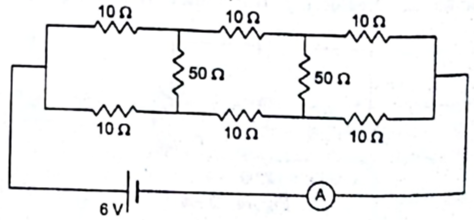
Concepts/Formula used:
Resistors in Series:
![]()
Resistors in parallel:
![]()
Potential Difference (V) across a resistor of resistance R when current I passes through it is given by Ohm’s law:
![]()
Let the current through the ammeter be ![]() . We can see that the upper and lower part are completely identical. So , there is no reason they should have different currents. Hence, the current equally distributes into each branch due to symmetry.
. We can see that the upper and lower part are completely identical. So , there is no reason they should have different currents. Hence, the current equally distributes into each branch due to symmetry.
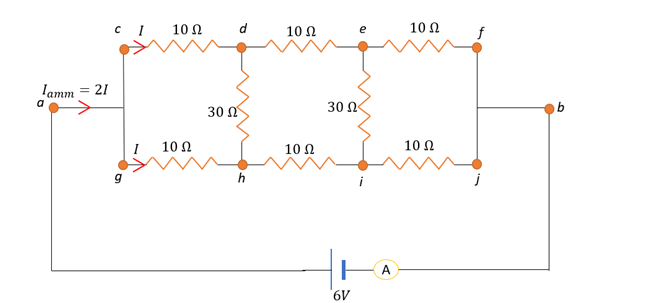
Due to this symmetry, d and h; e and i are the same potential. Hence, no current passes through de and ei.
Hence, we can redraw the circuit by removing the resistors across dh and ei.
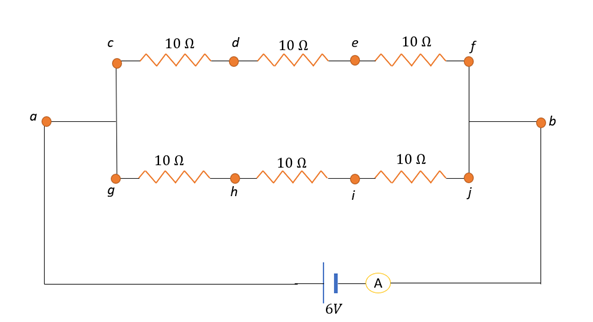
We can see that the resistors across cd, de and ef are in series. Hence,
![]()
Similarly,
![]()
We can rewrite the circuit as follows:
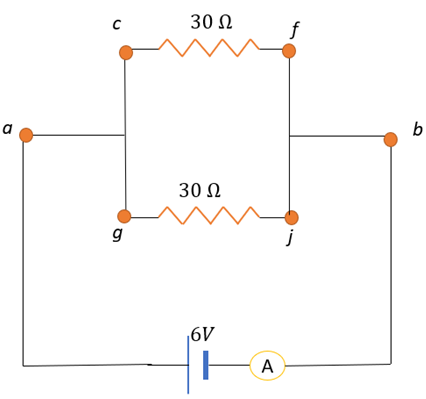
We can easily see that cf and gj are in parallel.
![]()
![]()
Now, the circuit looks like this:
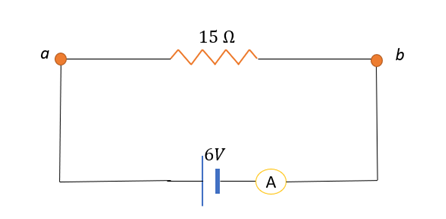
By Ohm’s law,
![]()